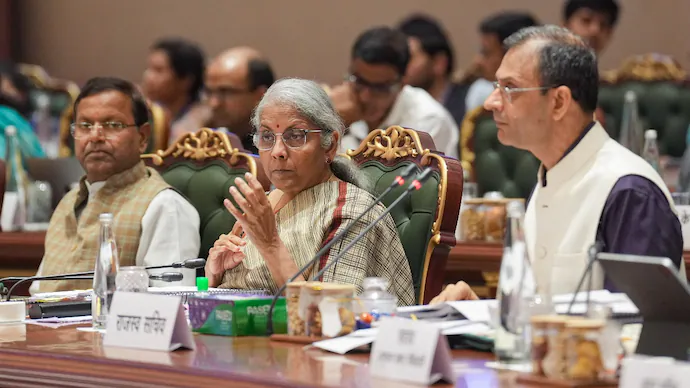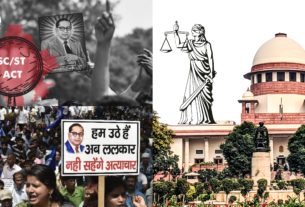Hold onto your wallets, folks! The 53rd GST (Goods and Services Tax) Council meeting was a whirlwind of rate cuts, exemptions, and eyebrow-raising decisions that will affect everything from your morning milk packets to your next electric vehicle purchase. Whether you’re a taxpayer, business owner, clueless like me or just someone who loves to keep tabs on the economy, Here are the top 10 key takeaways to help you navigate the tax maze and sound more intelligent in your next chat with an annoying office colleague you only interact with to break the awkwardness.
1. Aadhaar Authentication
The Council decided to implement Aadhaar-based biometric authentication to combat fake invoicing and enhance tax compliance. Kinda like a new, better equipped/integrated cop (Aadhaar) is in town to police the Wild Wild West world of tax evasion. This move is aimed at roping in those pesky outlaws issuing fake invoices. By ensuring everyone’s identity is verified, the government hopes to plug revenue leaks and boost compliance. (Well, that’s the pitch anyway, but we’ve all seen our IDs leaked more than a few dozen times in the last few years, so take it with a pinch of salt) It’s a step towards making the tax system as foolproof as a biometric lock.
2. GST Rate Standardisation: Cheaper milk packets, cartons, bottles and uniform cans
A uniform 12% GST rate was set for milk cans, and the GST rate for carton boxes was reduced from 18% to 12%. Imagine buying milk cans at a lower tax rate while your Amazon deliveries come in cheaper carton boxes—sounds like a small win for the consumer! Standardising rates simplify the tax structure, making compliance easier for businesses and slightly easing the financial burden on consumers.
3. Railway Services: Free ride on platform tickets
Platform tickets are now GST-exempt, and services related to hostel accommodation outside educational institutions also get a tax break. So, next time you’re at the railway station, you can wave goodbye to that tiny GST component on your platform ticket. This exemption extends a bit of financial relief to everyday commuters and students, making travel and accommodation just a tad more affordable. The operative word here is “tad.”
4. Support to States
The central government pledged support to states through timely tax devolution, conditional loans, and an extension of the GSTR 4 filing deadline for small taxpayers. This is the government’s way of saying, “We’ve got your back!” Timely financial support and extended deadlines are crucial for the economic stability of states and small businesses, ensuring that the wheels of the economy keep turning smoothly.
5. Tax on Gold: Steady as she goes
The GST rate on gold remains unchanged at 3%. For all you gold bugs out there, this is both good and bad news. While the rate isn’t going up, it also isn’t going down. So, your investments in the shiny metal stay as costly as ever. It’s a status quo that keeps the gold market steady, without any additional burdens on your precious jewellery purchases. But if you’re broke like me, it shouldn’t matter what happens here. But try to start investing a little nevertheless, you’ll thank yourself later.
Also read: DMK’s freebie fiesta
6. Tax on Textiles: From 12% to 5%
The GST rate on textiles was reduced from 12% to 5%. Fashionistas, rejoice! This significant cut makes textiles more affordable, potentially lowering prices for your next shopping spree. It’s a move aimed at boosting the apparel industry while making clothes and fabrics more pocket-friendly. Win-win for consumers and manufacturers.
7. Tax on Electric Vehicles: Go green and save more-ish
The GST rate on electric vehicles (EVs) was slashed from 12% to 5%. This is a significant nudge towards sustainability. Lowering the tax on EVs makes them more accessible to the average consumer, encouraging a shift towards greener transportation options. It’s a win for the environment and your wallet, making that futuristic Tesla dream a bit more attainable. Except that, EVs are still ridiculously expensive in the country and a little more subsidy wouldn’t hurt.
8. Tax on Handicrafts:
The GST rate on handicrafts was reduced from 12% to 5%. This cut is like a love letter to artisans and local craftsmen. By making handicrafts more affordable, the government is supporting cultural heritage and local economies. So, go ahead and splurge on that handcrafted pottery or embroidered tapestry or whatever it is people do—it’s practically patriotic.
9. Tax on Job Work: Lower operational costs
The GST rate on job work services was reduced from 12% to 5%. For the unversed, job work services are vital for manufacturing, as they involve processing goods supplied by the principal manufacturer. Lowering the GST rate reduces operational costs, encouraging more businesses to outsource parts of their production process, which in turn could lead to lower prices for consumers.
10. Tax on Diamond and Gemstone Processing: Almost tax-free sparkle
The GST rate on diamond and gemstone processing services was reduced from 3% to a mere 0.25% Gujarati merchants have prayed for this and possibly paid for this for a long time and now it has materialised. Pays to be loyal to one party, clearly. This drastic reduction is a big deal for the jewelry industry. It’s designed to make Indian jewellery even more competitive in global markets. So, if you’ve been eyeing that dazzling diamond ring, now might be the time to make that purchase. Except, diamonds are worthless, so, maybe try synthetic ones – they’re virtually the same. Or better yet, stick to good old gold.
Also read: News consumption trends
What’s Getting Cheaper and What’s Getting Costlier?
53rd GST Council: What’s Getting Cheaper
- Milk cans and carton boxes: With standardised GST rates, these items will see a price drop.
- Railway services and platform tickets: Commuters can save a bit on their travels.
- Textiles: Lower GST rates make clothing and fabric more affordable.
- Electric Vehicles: A significant cut in GST makes EVs more attractive.
- Handicrafts: Support for artisans means cheaper handmade goods.
- Job Work Services: Lower operational costs can translate to cheaper end products.
- Diamond and Gemstone Processing: The massive rate cut will likely lower prices for these luxury items.
53rd GST Council: What’s Getting Costlier:
- Digital Authentication Compliance: While not a direct consumer cost, businesses will need to invest in Aadhaar authentication systems, possibly passing on some costs to consumers.
- Non-Exempted Educational Services: Hostel accommodations outside educational institutions are exempt, but other related services might see a price adjustment.
- Unchanged GST on Gold: While it’s not an increase, maintaining the 3% GST on gold keeps it relatively expensive compared to other items seeing cuts.
The 53rd GST Council meeting has brought a mix of changes aimed at simplifying tax compliance, supporting small businesses, and promoting sustainable and cultural sectors. While some items will get cheaper, a few may see indirect cost increases. As always, the devil is in the details, and the impact of these changes will unfold over time. Write to me at editor@dailypinnacle.com if you want to share any updates or analysis on the 53rd GST Council meeting, in case I missed something.
For a more detailed look at these changes, check out these articles. 10 key takeaways, what’s getting costlier and what’s getting cheaper




